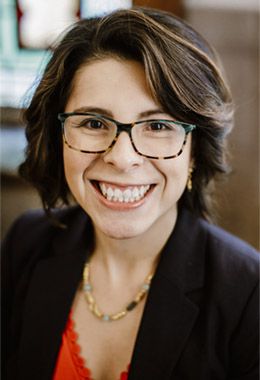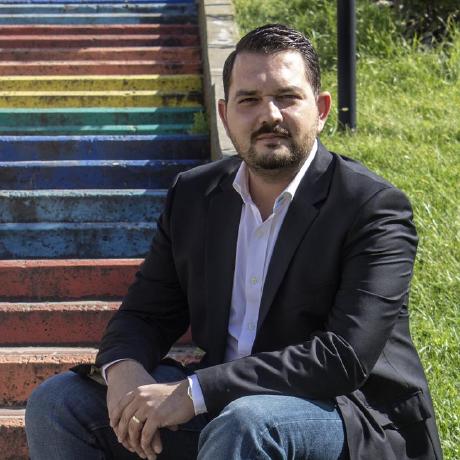All meetings occur at 12pm Eastern via Zoom.
About
Welcome to the official page of the Advanced Research Colloquium. This series of meetings is for scholars to present their in-progress work and receive feedback on it. Presenters will send out some initial material before the workshop, present some of it at the workshop, and then receive questions and feedback over the course of an hour. This colloquium connects Binghamton graduate students, faculty, and alumni in a format that allows them to continue sharing their research, connecting, and developing ideas. We also welcome the participation of other scholars looking to share their work with like-minded researchers.
Next Meeting
Upcoming Presentations and Meetings
October 14th
November 11th
December 9th
Previous Presentations
July 8th – Kevin Banda, Erin Cassese, and Joshua Zingher, “Adventures Among the Engaged? A Reassessment of Sorting in American Politics.”
Abstract
June 10th – Paola C. Fajoardo-Heyward and Carlos Moreno-Leon, “Respice Polum in Colombia’s voting behavior in the UN General Assembly: what the evidence shows.”
What determines small states’ behavior in multilateral organizations? Mainstream theories of international relations expect small states to be conditioned by the power asymmetries in which they are immersed. Recent work explores if this is always the case. Following this approach, we argue that small states have more choices than to support or oppose powerful countries. We use the case of Colombia to test our argument. Due to close relationship that Colombia has with the United States (US), scholars describe Colombia’s behavior as subordinated to US interests. We provide a more nuanced view of the reasons behind Colombia’s foreign policy. We review Colombia’s voting behavior in the United Nations General Assembly (UNGA) and analyze the circumstances under which Colombia votes the same way as the US. Our findings suggest that while some types of foreign aid and trade dependency increase the chances that Colombia and the US vote similarly in the UNGA, counternarcotics aid decreases the likelihood that Colombia votes as the US does. Our findings suggest that factors not associated with US influence predict Colombia’s support of US in the UNGA. These factors are the relevance of Colombia’s vote and the proportion of Latin American nations that vote in line with the US.
May 20th – Robin Best, “Are leftist voters better substantively represented? The effects of variance in district magnitude on party-voter ideological congruence”
Abstract: Electoral systems are known to affect the partisan outcomes of elections. While proportional representation systems are shown to produce better representation of the left than their majoritarian counterparts, scholarship on districted proportional representation systems has found that variance in district magnitude generally results in the numerical underrepresentation of leftist parties in the legislature. Here, I shift the focus to ask how districted proportional representation systems affect a different quality of representation: party-voter congruence. In proportional representation systems that have districts of both large and small magnitudes, the degree of party-voter congruence will depend on the magnitude of the district. In large-magnitude districts where party systems are more fragmented, voters can select the party they sincerely prefer on policy grounds, which increases the degree of ideological representation between voters and their elected representatives. In smaller districts where only the largest parties will be electorally viable, voters will choose among fewer viable party options, parties will be more likely to moderate their electoral appeals, and accurate ideological representation will be attenuated. To the extent that voters in large, urban districts tend to favor leftist parties and voters in small, rural districts tend to favor rightist parties, this implies that urban, leftist voters will be better represented in substantive terms, but not numerical terms, compared to their rural, right-leaning counterparts. These expectations are tested using survey data that includes the magnitude of each respondent’s district from 45 elections in 12 districted proportional representation systems included in the Comparative Study of Electoral Systems (CSES). The results consistently support the expectation that party-voter ideological congruence will be higher for voters in larger electoral districts, and lower for voters located within smaller districts. However, the precise relationship between district magnitude and party-voter congruence differs between leftist and rightist voters. Increasing district magnitude increases party-voter congruence for leftist voters more than for rightist voters. However, leftist voters appear to suffer a congruence penalty in smaller districts, whereas the congruence of rightist voters is less affected by district magnitude. The overall effect of increasing district magnitude for leftist voters, then, only serves to mitigate the congruence penalty they suffer in small-magnitude districts. These findings bear important implications for broader notions of ideological congruence, party positioning, and representational inequality under different electoral rules.
April 15th – Mert Bayar, “Politics of Good and Evil: Conspiracy theories role in democratic erosion: evidence from the United States and Turkey”
Abstract: Conspiracy theories have always been widespread – potential alien invasions, suspicious assassinations of political figures, or secret societies ruling the world – and until recently, those who entertained such beliefs represented widely divergent political ideologies. But what happens when rival politicians use popular conspiracy theories against each other, or citizens rely on these ideas to inform their political decisions? How do such claims impact people’s understanding of democratic politics? What does this conspiracist challenge mean for the future of democracy? This project explores the consequences of conspiracy beliefs, emphasizing a recent wave of partisan conspiracy theories from Turkey and the U.S.A. – two significantly different countries with surprising resemblances. It identifies when conspiracy theories become relevant and influential in mainstream politics either as divisive and destructive to democracy or unifying and helpful to democratic forces. Despite differences between Turkey and the U.S.A – political history and institutions, economic development, and social/religious diversity – recent political experiences from these countries demonstrate a similar pattern of impact related to conspiracy theories in their politics, offering new understandings about their nature. The United States and Turkey, as two very different countries experiencing a similar problem, present us a unique opportunity to understand the impact of conspiracy theories in democracy in general and democratic backsliding/erosion in particular. With findings from Turkey and the U.S.A., this research provides knowledge about the likeness of conspiracy theories’ impacts, despite significantly different contexts. However, these two countries also offer insights into the limits of the power of conspiracy theories. Recent elections in both countries imply that conspiracy theories not only lead to authoritarian populism but also create a democratic reaction that mobilizes and encourages citizens to push back against such narratives. Through two survey experiments and 14 focus group sessions in Turkey and the U.S.A., this dissertation project analyzes how conspiracy beliefs affect people’s attitudes toward political institutions, democracy, and autocracy when attached to salient political identities such as partisanship.
March 11th – Mert Moral with Emre Toros (Prof., Hacettepe University), Yasemin Tosun (PhDc., Sabanci University), and Melike Ayse Kocacik-Senol (PhD, Sabanci University)
Title: “Let Them Take a Bus Instead: On the Effects of Intimidation on Turnout and Vote Choice in Turkey.”
Abstract: The election law, amended shortly before the announcement of the snap presidential and parliamentary elections in June 2018, provides the Supreme Election Council (SEC) with the authority to move or merge polling stations as per local authorities’ requests. As a form of voter manipulation, we argue, this requires affected voters to travel long distances, increases the cost of voting, and corresponds to a particular type of electoral manipulation. This study asks how the Council’s related decisions, which affected about 100,000 voters, influenced their turnout and voting behaviors. Our novel geocoded precinct-level dataset allows us to compare the polling stations that were moved/merged with others that were (proposed but) not, and with the targets designated by the local authorities. We first investigate whether the selection of the moved/merged and target precincts was in line with the legal criteria and SEC’s jurisdiction. We then match the target precincts with those with similar geographic and political attributes to eliminate any confounding factors and empirically assess the causal effect of the SEC’s decisions on the differences between the treated and non-treated precincts. The findings suggest a non-random selection of target precincts and provide empirical support for our expectations that moving and merging polling stations decreased voter turnout and many parties’ vote shares and increased the strongest opposition party’s vote share in the affected precincts. We conclude by discussing the implications of our findings from the perspectives of democratic representation, electoral manipulation, and competitive authoritarianism.
February 11th – Ben Fordham, “Race, Trade, and the Demise of Southern Support for Multilateralism, 1945-1962.”
Abstract: Southern members of Congress were once the strongest supporters of multilateralism in U.S. foreign policy, nearly unanimously backing the League of Nations and other multilateral initiatives in the early 20th Century, as well as the United Nations during and after World War II.
By the end of the 1950s, though, many of them had turned sharply against this institutional form. This paper assesses two possible explanations for this change. First, multilateral rules on human rights threatened the institutions of white supremacy in the South beginning in the late 1940s. This system was incompatible with any reasonable interpretation of the human rights norms promoted through the United Nations. Second, labor-intensive industries, especially textiles, began moving into the South in the early 20th Century to take advantage of lower labor costs. These protectionist industries eroded the predominance of the agricultural export sector, especially cotton, reducing the economic benefits of multilateral cooperation. An analysis of roll- call voting in the House of Representatives finds evidence for both these lines of argument though the defense of racial hierarchy appears to be the most important consideration.
January 21st – Michael Allen (Boise State University), Michael Flynn (Kansas State University), and Carla Martinez Machain (Kansas State University), “The Motte-and-Bailey of Power Projection: American Overseas Deployments in the Context of Great Power Interaction.”
Abstract: States have long deployed their military forces across the globe as a means of power projection. In particular, in the post-World War II era, the United States has maintained an unrivaled military presence worldwide. Yet, the number of forces deployed to each country has varied across time as priorities change. We propose a theory of United States deployments that suggests expansion and contraction, under the context of diminishing overseas deployments, follow periods where the U.S. faces different threat assessments of the world. When the U.S. is secure, it expands its basing network. When the U.S. faces heightened threats, it redeploys troops to enduring allies. We label this the motte-and-bailey foreign policy.
December 10th – Sam Bell (Kansas State University), “The United Nations Security Council and Human Rights: Who Ends Up in the Spotlight?”
Abstract:
At the end of the Cold War, the United Nations Security Council broadened its view on what constitutes a “threat to international peace and security.” With the rise of the concept of human security and increased focus on human rights, the Council has been more willing to act in response to domestic political issues such as human rights abuses. Despite an increased commitment to human security, the Council’s attention on these issues has been uneven. What determines whose rights capture the Council’s attention? What role do efforts by NGOs to “name and shame” play in the setting of the Council’s agenda? We find that human rights abuses lead to countries being placed on the Council’s agenda, but human rights organization naming and shaming results in more action by the Council – in terms of both meetings held and resolutions
passed.
November 19th – Graig Klein (Leiden University), “Domestic Terror Groups’ Campaign for Constituents“
Grant Proposal Abstract (for now): This study will develop an innovative triadic-relation theory focusing on how domestic terror group-government-constituent interactions can improve our understanding of how terror groups use violent tactics for constituency building goals in response to changes in government-constituent relations, in particular repression. In doing so, these goals are credited with explanatory power in identifying domestic terror groups’ strategic attack target selection. The innovative theory builds from the premise that in response to government repression, domestic terror attacks are strategically directed against the government agent(s) of repression in a campaign for constituency building. Domestic terror groups apply violence to highlight their capability to punish the government and avenge grievances with the goal of shifting constituents’ support, at least passively, toward the terror group.
September 10th –Paul Collins, Christine Bailey, Jesse H. Rhodes, and Douglas Rice. “The Effect of Judicial Decisions on Issue Salience and Legal Consciousness in the LGBTQ+ Community “
Abstract:
Scholars have long questioned whether courts can influence society. We contribute to this significant debate by investigating the ability of judicial decisions to shape issue attention and affect toward courts in the LGBTQ+ community. To do this, we compiled an original database of LGBTQ+ magazine coverage of court cases from 1998-2004, a period that includes two major gay rights decisions: Lawrence v. Texas (2003) and Goodridge v. Massachusetts Department of Public Health (2003). We argue that these cases will influence attention to sodomy laws (Lawrence) and same-sex marriage (Goodridge), and increase the positive tone of coverage of those issues. Combining sophisticated computational social science techniques, including structural topic modeling and sentiment analysis, with rich qualitative analysis, we find support for our expectations. We reveal that Lawrence and Goodridge increased attention to sodomy laws and same-sex marriage, respectively, and both enhanced the affect of the LGBTQ+ community toward courts. Further, we demonstrate the ways in which media coverage of Goodridge helped shape the legal consciousness of the LGBTQ+ community.
August 20th – Yüksel Alper Ecevit (Çukurova University) and Fatih Erol (Koc University), “Stand up for Whom? A Cross-National Investigation of Elite-Mass Congruence in Ideological Orientation and Polarization.”
Abstract: In contrast to the vast literature on the ideological alignment between citizens and parties, little is known about whether citizen-candidate congruence on political beliefs and polarization affects satisfaction with democracy and political efficacy. As a way forward, by combining mass survey data on partisans (e.g., Comparative Study of Electoral Systems [CSES] modules 3 to 5) with candidates survey data (e.g., Comparative Candidates Survey [CCS] waves 1 and 2), we assess how attitudes towards democratic representation vary according to congruence on ideology and polarization at the levels of partisans and candidates. Notably, the (mis)match between the candidates and partisans on their ideological standing and their parties’ ideological orientation is related to the satisfaction with the current functioning of democracy and the feeling of greater opportunities for political influence. Concerning citizen-elite congruence on polarization, however, we did not come across any meaningful effects on satisfaction with democracy and political efficacy. The results also highlight that meaningful partisan-candidate congruence effects are not confounded by alternative explanations such as the winner-loser gap and populism.
July 16th – Olga Shvetsova (Binghamton University),Andrei Zhirnov (University of Exeter), and Julie VanDusky-Allen (Boise State University), “TBD.”
June 18th – Ben Farrer (Knox College).
Ben Farrer is an associate professor in the environmental studies department at Knox College, where he has taught since 2015. His research focuses on the political organizations created by under-represented groups, as well as environmental policy and research methods. His CV is available here.
Title: “A Model of The Public Sphere as a Common Pool Resource, Subject to Technological Risks.”
Abstract: In this paper, we develop a theory of public attention to politics as a common-pool resource problem, where the resource extraction is mediated by increasingly risky technologies. We begin with the idea that political actors compete for public attention, but if the public are exposed to too many high-intensity appeals for attention, the result will be a more polarized and less attentive public. We then argue that contemporary social media technology accelerates this process, in two ways. First, algorithmic microtargeting makes appeals more intensely engaging, so public attention is exhausted faster. Second, sharing content with friends creates a link between the public and private spheres. This means that polarization and apathy in politics will lead to conflict expanding even further across society. Our model therefore illustrates the crucial role of technology in political attention, and in CPRs more broadly. We conclude that Elinor Ostrom’s (1990) findings about how to prevent CPR collapses, can be useful for improving the public sphere.

May 21st – Anessa Kimball (Université Laval), Director of the Center on International Security (CSI) at the Graduate School of International Studies (ÉSÉI) and Co-Director of the Canadian Defense and Security Network (CDNS).
Title: “Rational strategic problems and the collaborative defense of North America: Canadian credibility, Arctic sovereignty & defense (NATO/NORAD) burden-sharing.”
Abstract: Examining the intersection of credible commitment, rational strategic problems, sovereignty, and bargaining over defense burden sharing, this research brings together issues facing continental North America. US and Canadian disagreements over the Arctic space offer a special look into how the partners continually collaborate despite disagreements over certain fundamental issues (i.e. where boundaries are drawn). The strategic importance of the Arctic region as a consequence of external factors such as climate change, Russian Arctic aspirations and assertions, as well as the importance of navigable shared commerce routes. Another issue of friction concerns strategic defence over North America in the context of NORAD the binational anchoring operational institution ensuring Canadian access to US strategic thought (Kimball 2018). NORAD’s informal structure followed by consequent adaptation to changing contexts offers evidence why such agreements are useful in defense, as they cut out other political veto-players. NATO binds the continental partners to collaborative deployments in Europe and beyond for the last seven decades (Kimball 2019). Burden sharing within NATO offers a vast by incomplete literature due to heterogeneity across models, years, and cases selected; notwithstanding the contested criteria that national budget allocate of 2% on defense & military spending. The managements of political and security risks during post cold war enlargement rounds (Kimball 2020) confirmed the essential role of US defense and security underwriting concerning newer partners. Contributions to NATO are dissected across multiple aspects to go ‘Beyond the 2%’ in the study of burden sharing. Finally, data visualizations of the extent of partner and competitor defense & security links to the US identify clusters of states and implications are offered (Kimball, forthcoming).












